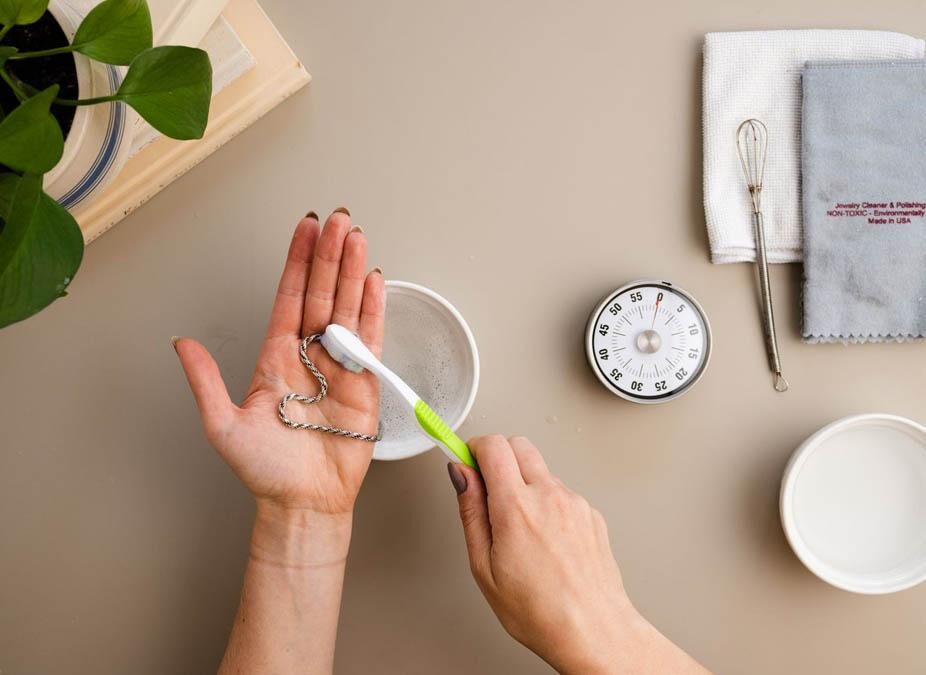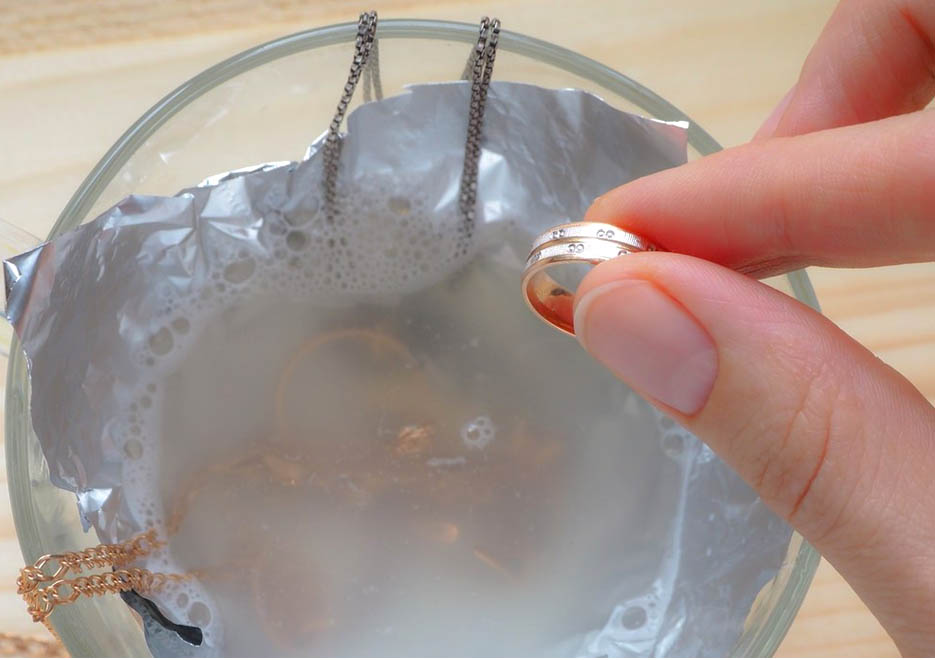Stainless steel, an alloy celebrated for its resistance to tarnish and corrosion, has woven its way into the very fabric of our daily lives, gracing everything from our kitchen cutlery to the shimmering jewelry we wear. But have you ever wondered what gives stainless steel its iconic longevity? Or pondered the myriad ways, both unconventional and traditional, to keep it gleaming like new? Journey with us as we demystify the very essence of stainless steel, introduce household hacks for its upkeep, delve into state-of-the-art cleaning technologies, and share invaluable tips to ensure its enduring sparkle. Whether you’re a stainless steel aficionado or merely curious, this guide promises insights that might just change the way you view and care for your prized possessions.
What is Stainless Steel?
Steel is an alloy made of iron and carbon. This material corrodes because of the iron content. When the iron combines with the oxygen in the air or water, it oxidizes to create iron oxide. The result is a reddish-orangish flaky material we call rust.
To make steel stainless, alloys such as chromium, nickel, silicon, copper, sulfur molybdenum, titanium, niobium, manganese, etc are added. Chromium, in quantities between10 and 30%, is added to create chromium oxide, which becomes a protective barrier against the elements, making it stainless.
The result is stainless steel, which is corrosion-resistant, fire-resistant, eco-friendly and durable. Stainless steel is also relatively easy to make and clean, and it has a low lifecycle cost.
This material, depending on its grade, can be found in everyday items such as cutlery, washing machines, industrial piping, sinks, building structures, and of course, jewelry.
Cleaning Stainless Steel in 3 Steps
No matter which cleaning agent you use, or which method, cleaning stainless steel generally has three main steps, which are cleaning with chemical/cleaner, polishing and steaming/rinsing.
1. How to Clean Stainless Steel Jewelry Using Soap and Water
Using soap and water is the simplest way to clean your stainless steel jewelry at home. It’s also great for cleaning diamond earrings, gold-plated jewelry and most other pieces.
- Warm water
- 2 bowls
- 2 non-abrasive, lint-free cloths
- Polishing cloth
Step 1: Combine two drops of your mild dish soap with warm water until sudsy. Fill the second bowl with plain warm water.
Step 2: If your stainless steel jewelry is visibly dirty, allow it to soak for 5-10 minutes. Otherwise, proceed to dip one of the lint-free cloths into the soapy water. Keep the other cloth dry.
Step 3: Gently rub the wet cloth against the grain. Avoid using an abrasive cloth that may cause minor scratching. You can also use a soft tooth brush
Step 4: When finished, dip the stainless steel jewelry into the bowl with plain warm water to get rid of any loose particles and soap residue. (Alternative: Rinse under faucet)
Step 5: Dry with the second lint-free cloth or allow it to air dry. Use your polishing cloth afterward for best results.
Pros:
- Cheap
- Easy-to-follow steps
- Quick
Cons:
- May not clean extremely dirty pieces
2. How to Clean Stainless Steel Jewelry With Baking Soda
Baking soda is particularly great for cleaning stainless steel jewelry because it also doubles as a polisher.
- 1 tbsp baking soda
- ½ tbsp water
- Bowl
- Soft-bristle toothbrush

Step 1: Combine baking soda with water in the bowl to create a thick paste.
Step 2: Dip the toothbrush into the mixture. Use it to gently scrub the surface of the jewelry, avoiding any gemstones as baking soda can scratch the surface of soft gemstones.
Step 3: After cleaning, rinse under running water, then pat dry. Polish as necessary.
Pros:
- Acts as polisher
- Acts as deodorizer
- Gets rid of stubborn grime
Cons:
- Can scratch gemstones
Baking soda may also be combined with vinegar to create a mild reaction. This should only be used for tough grime or grease.
3. How to Clean Stainless Steel Jewelry With Vinegar
As you can see, cleaning stainless steel jewelry is possible with everyday household items. Another example of this is vinegar. It creates a simple, yet effective cleaning solution:
- 1 cup vinegar
- 1 cup water
- Bowl
- 2 soft, lint-free cloths
- Spray bottle (alternative)
Step 1: Combine vinegar with water in the bowl. Submerge stainless steel jewelry for 10-15 minutes.
Alternative: Combine vinegar and water in the spray bottle. Next, spray the mixture onto stainless steel jewelry separately.
Step 2: Dip one cloth into mixture and spot clean jewelry. Keep the other cloth dry.
Step 3: Rinse jewelry under running water, then dry with the second soft lint-free cloth. Finally, use a polishing cloth for best results.
4. Is Toothpaste the Best Cleaner for Stainless Steel Jewelry?
Next time you go to the bathroom, you might want to look at your toothpaste a bit differently. It may very well be the next thing you use to clean your stainless steel jewelry at home!

The best toothpaste is one that is free of whitening agents, tartar control agents, silica or any abrasive additives that will scratch the metal. Gel toothpaste will not work well because it lacks that mild abrasive agent that will polish the stainless steel.
The right toothpaste is gentle enough to get the stainless steel clean without damaging it. Toothpaste also has a mild abrasive agent to make the stainless steel shine.
- Appropriate type of toothpaste
- Soft, lint-free cloth
- Warm water
Step 1: Apply the toothpaste using a damp cloth, avoiding gemstones. Do not use a toothbrush as you may end up scrubbing harder than you need to.
Step 2: Rub gently across the grain for a few seconds.
Step 3: Rinse with warm water and allow it to air dry.
Pros:
- Readily available
- Cheap
- Acts as polishing agent
Cons:
- May scratch or loosen gemstones
5. Why Not Use a Jewelry Cleaning Kit?
You don’t need a jewelry cleaning kit for stainless steel jewelry you don’t use often. However, for daily- wear pieces, you may find that a jewelry cleaning kit is best for shine and brilliance.
Many people prefer to use jewelry cleaning kits for regular home cleaning, and leave the DIY cleaners for emergencies; for instance, when they run out of cleaning solution.
The choice is all yours; however, be mindful of the type of jewelry cleaning kit you purchase. Ensure that it is suitable for the metal you need to clean, whether it’s gold jewelry or stainless steel, also considering the gemstones, particularly for those below 8 on the Mohs Hardness Scale.
Try this Connoisseurs Jewelry Cleaner for your stainless steel jewelry. It also works well for gold, diamonds, platinum and other precious metals, as well as stone jewelry.
6. Using Ultrasonic Cleaners for Stainless Steel Jewelry
Ultrasonic cleaners are another option for enhanced stainless steel jewelry cleanings at home, and they work well for the rest of your jewelry.

These cleaners work by sending ultrasonic waves through the water to dislodge dirty particles and get into the nooks and crannies you can’t reach with a cloth. An ultrasonic cleaner can also clean multiple pieces of jewelry at once and are not only safe for delicate jewelry but also glasses, combs, watchbands, dentures, toothbrushes, razors, and so on.
It all works at the click of a button, without the need to manually rub, scrub or polish your jewelry. If you’re interested in adding one of these devices to complement your jewelry box, try this Magnasonic Professional Ultrasonic Jewelry to see how well it can work for you.
7. Too Busy? Take Your Jewelry to a Jewelers for Professional Cleaning
If you don’t have the time to clean your stainless steel jewelry yourself and/or have no interest in purchasing a cleaning kit or ultrasonic jewelry cleaner, your next option is to take it to a professional for an expert clean.
When you take your jewelry to a professional cleaner, it will be closely examined to determine the best method for restoring its brilliance. Some jewelers use professional versions of ultrasonic cleaners, and instead of rinsing, a blast of steam is used for stubborn pieces of grime and polishing.
Others use their own secret cleaners and methods to achieve the best results. Be sure to enquire about the best method for cleaning your specific piece of stainless steel jewelry after your clean.
Pros:
- Better overall result
- Prevents unnecessary damage to metal or gemstones
- Can make minor repairs
Cons:
- Can be expensive
How to Maintain Your Stainless Steel Jewelry
We know that stainless steel does not erode or tarnish easily, but you still need to make an effort to keep it in the best state possible. Here are some things you should know about maintaining stainless steel jewelry:
- Store your jewelry in a soft pouch or container.
- Avoid wearing stainless steel jewelry around bleach and harsh chemicals, as they can cause staining.
- Use a polishing cloth after every clean for best results.
- Do not store stainless steel jewelry with sharp or abrasive objects.
- Do not attempt to fix scratched jewelry yourself because you can make it worse. Take it to a professional.

For 10 years, I’ve been in the luxury publishing industry, editing magazines with a special emphasis on watches and jewellery. I bring passion and authority to my work, featuring fresh jewelry collections, interviewing renowned designers and historians, reviewing globally-acclaimed jewelry books, and keeping my audience updated on trade show happenings. I take pride in highlighting jewelers who specialize in vintage or antique pieces.




